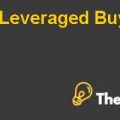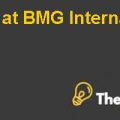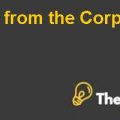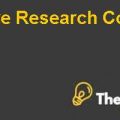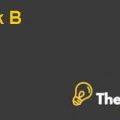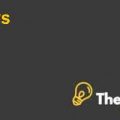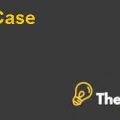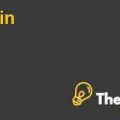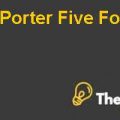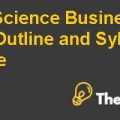
QUESTION 1
Evaluate the progress of the company and its situation at year end, 2003.
In the foundation stage of the company, an important decision was made by the CEO of the company in the year 1999. The company had partnered with one of the capital venture named as Knee-Jerk to fund the R&D expenditures for the new software development. During the foundation phase of the company, Gianforte had won around 40 customer deals. In the second stage of the company called as the early stage in the end of 1998, the Vice President of Development of the company Mike Myer had developed the company’s innovative product which became a big success for the company when it incorporated the ASP model. With the application of the ASO model, the management of the company was able to do a lot of quality assurance testing quickly.
During the time period of 1998 to 1999, the internal growth of the company was impressive and its employees had increased from 8 to 80. The sales revenues for the company jumped up significantly. However, in order to sustain the growth, the company needed financing and therefore, it went for an IPO attempt in 2000. Although the sales were increasing however, the profits were decreasing. Over the years, the company had incurred losses and was faced with equity deficit, therefore, the IPO attempt failed.
Currently, standing at the end of the year 2003, the equity deficit of the company has reached to $45 million and it incurred a loss of about $ 4 million. Furthermore, the company also has a significant amount of debt on its balance sheet below $ 1 million. Looking at this weak performance of the company, the company had also received an offer from one of the technology company to acquire Right Now Technologies. However, other options such as acquiring other company, organic growth and finally another IPO attempt are also available to the company to turn around the situation of the company.
QUESTION 2
Based upon data in the case, what is a fair value for RightNow? If the company hits its forecasts, what could the company be worth in the future?
The fair value of the company and the value of the company if it hits its forecasts as predicted in the case have been performed on the basis of two methods. The first method that has been used in order to calculate the fair value of the company is the comparable valuation method. Within this method, the valuation of the company has been performed on the basis of the venture capital method and the multiple revenue method. Based on the venture capital method, the total fair value of the company standing at the end of the year 2003 is $ 82.8 million. This value has been calculated by taking the 2003 EBITDA and the average PE ratio of the technology industry.
Both of these values have been then multiplied in order to calculate the value of the company. The second method is the multiple revenue method. Based on this method, first of all the average revenue multiple as a ratio of the value of the companies has been calculated for all the comparable companies in the technology industry as shown in exhibit 4. The average revenue multiple has been calculated to be around 2.44 times. This has then been multiplies by the 2003 revenue of the company of $ 35879 and the fair value of the company has been calculated to be around $ 87.5 million. If we take the average of the two values then the current fair value of the company based on the information provided in the case is $ 85.1 million.
The second method that has been used in order to calculate the future value of the company based on the forecasts of the company is the discounted cash flow method. In order to calculate the value of the company through this method first of all the weighted average cost of capital for the company has been calculated. In order to calculate the weighted average cost of capital for the company, first of all the average beta asset has been calculate for all the comparable companies that have been provided in exhibit 3. The average beta asset has been calculated to be around 1.863. This beta asset does not need to be re-geared to value the company because the debt portion in the capital structure of the company is negligible and therefore, it has been ignored. The risk free rate and market risk premium has been taken as 4% and 10%. Based on this,the weighted average cost of capital of the company is calculated to be around 15%.................
This is just a sample partial case solution. Please place the order on the website to order your own originally done case solution.

